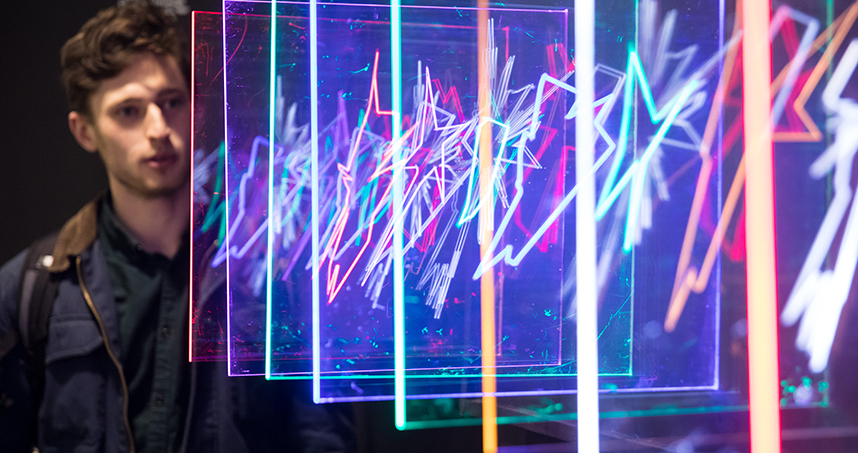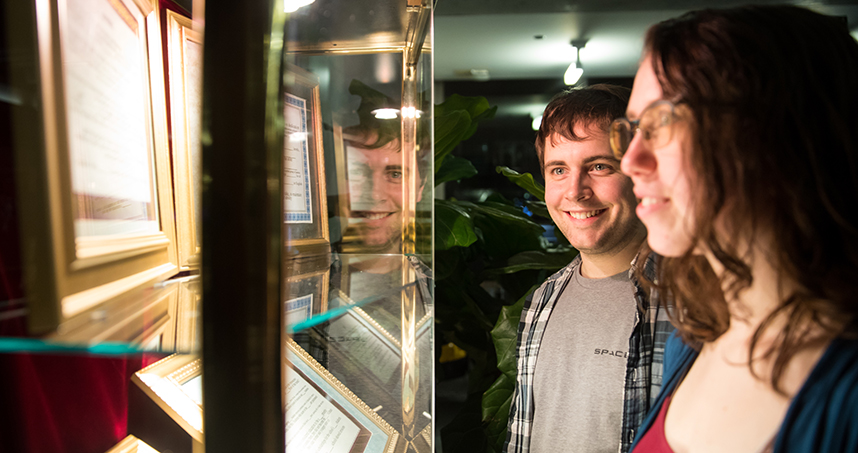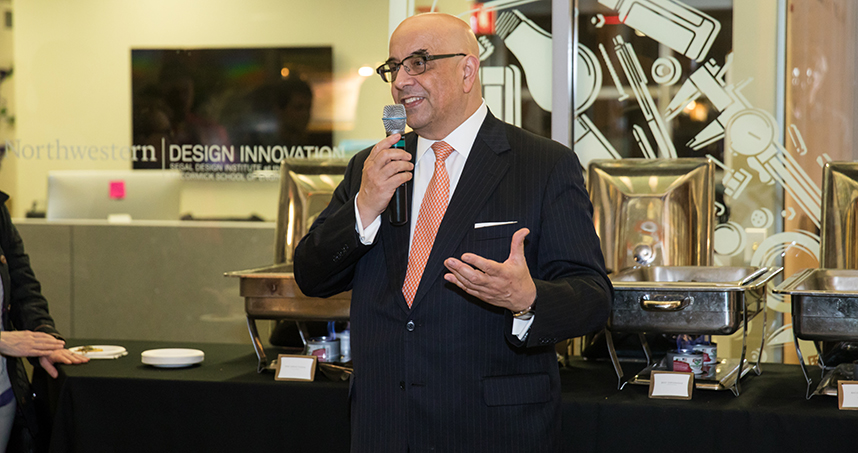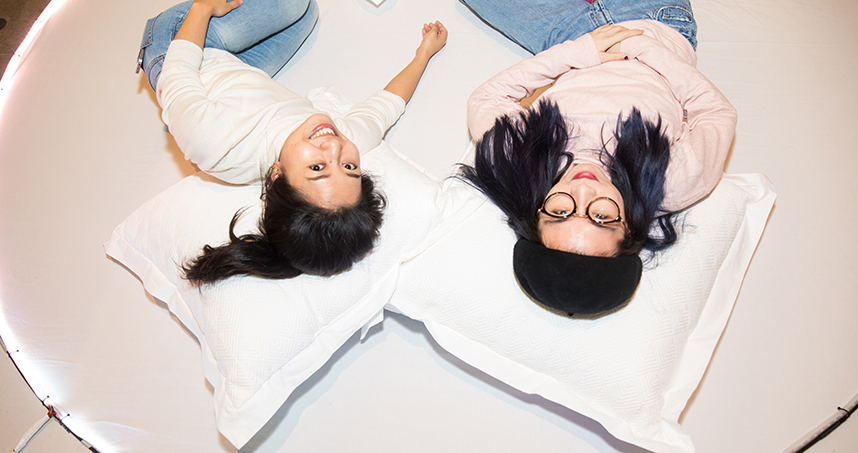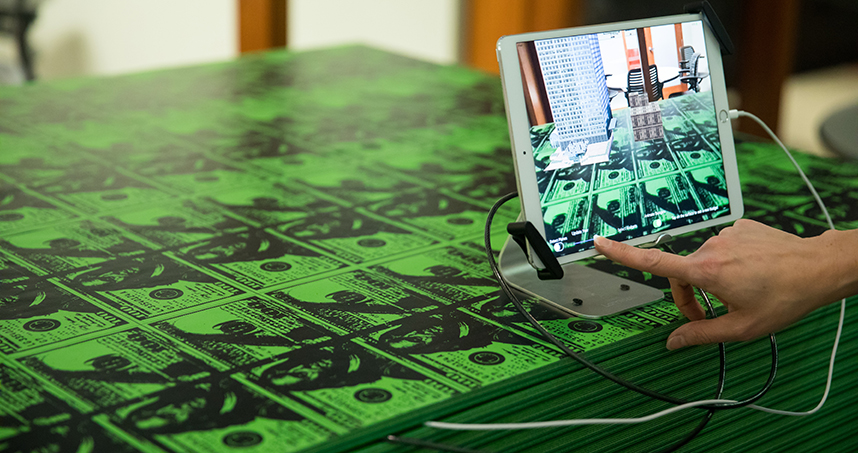‘Data as Art’ Explores Live Music, Government Spending, and Dreams
Exhibition runs through February 26 in Ford Motor Company Engineering Design Center
How might a fleeting musical performance create a sense of place for residents in a large city?
Students from Northwestern Engineering and the School of the Art Institute of Chicago (SAIC) created a soundscape to illustrate one possible answer. Sound Lines, an artistic installation that depicts live music performances across Chicago, is now on display in the Ford Motor Company Engineering Design Center through February 26. Visitors can interact with the installation by flipping switches to illuminate panels representing musical genres and the neighborhoods where the music was performed during a specific timeframe.
The installation is one of five projects included in an exhibition celebrating "Data As Art", a fall course jointly led by faculty from Northwestern Engineering and SAIC. During the course, students from both schools formed interdisciplinary teams, conducted research using data sets, and then represented that data through visual art. Supported by the Barry and Mary Ann MacLean Fund for Arts and Engineering, the course provides new opportunities for art and engineering students to enhance the way they see, perceive, and interact with the world.

“The studio environment and the construct of learning through self-exploration is often something new for the Northwestern Engineering students, but it is central to the approach at SAIC,” said Wicks. “It can be high risk in terms of the quality of the artistic outcome and at the same time be a highly valuable learning experience for the students.”
MacIver agreed.
“SAIC students are artists who are figuring out what the focus of their own work will be,” he said. “Their first question is ‘What is the problem or perspective I will create through my work?’ This is a very useful frame for engineering students, where sometimes the default is closer to ‘How am I going to solve the problem that I've been given?’ Having that diversity of cognitive styles within each group is the greatest benefit of collaborating with SAIC.”
Ann Yu, a senior double majoring in philosophy and computer science at at Northwestern, took the course because of her lifelong interest in art.
“I would dream of participating in the process of making art,” said Yu. “Data as Art showed me how someone from a mix of engineering and humanities backgrounds can contribute to the artistic process.”
Brad Gallagher, a senior at SAIC majoring in writing, found value in the class’s emphasis on teamwork.
“Our group had varied interests with one of us interested in coding, another interested in 2D graphics, and the third interested in building physical objects,” Gallagher said. “It was a rewarding experience to see how the project evolved through our collaboration.”
Other exhibited projects from this year’s course explore topics including government spending and dreams:
- Homo Somnum: An animative LED display that uses the data of brain activity collected from sleeping students by an electroencephalography monitoring method.
- Big Money: A sculptural installation that uses augmented reality to visualize the history of government spending.
- Fake It Until You Make It: A text-based installation created by using a script from the programming language Python to crawl newspaper articles about education.
- See Through Sifu: A video installation visualizes the movements of a Tai Chi practitioner, with elegant trajectories that evoke the attitude fostered by the Chinese martial art.
